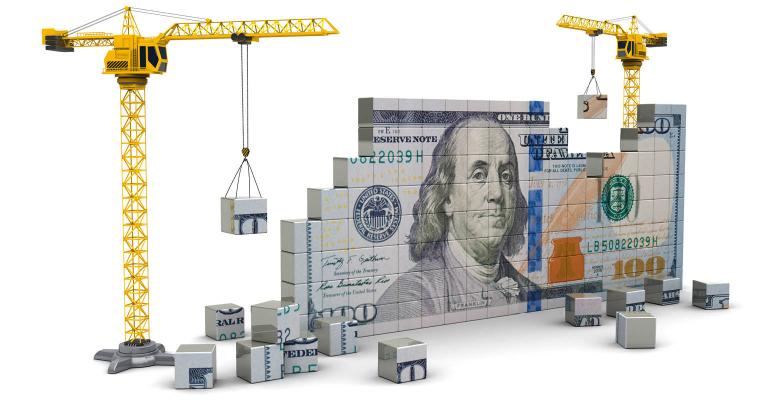We’re all hearing it: despite many positive economic indicators, the commercial real estate world is buzzing with late-cycle concerns. For developers and those invested in development projects, this uncertainty affects investment strategy. In this market, project timelines are more important than ever, because a significant market shift during the development phase could threaten your income strategy, whether you intend to operate, sell or lease up your property. Compared to ground-up development projects, value-add projects, in the form of renovating, reusing or repositioning existing properties, are an appealing investment because they may be quicker to cash flow and therefore less vulnerable to market shifts. Additionally, as the future pricing of raw materials remains uncertain, reuse of existing properties may be a cheaper alternative to new construction. Given those advantages, it’s not surprising that over a third of respondents to a recent CBRE investor survey chose value-add as a preferred asset strategy for 2019.
But rehab and adaptive reuse projects come with their own set of risks, which must be managed properly if investors wish to capitalize on the redevelopment trend. With little room for error on the timing and financials of these projects, the rewards of redevelopment are only realized if the project maximizes budget and minimizes delays and risk.
To that end, I recommend four risk management strategies to make a value-add investment worth your time and money.
Don’t skimp on assessing key feasibility questions
Leverage a feasibility study to evaluate whether your business objectives and the kind of tenants/occupants you want to attract can work with the property type and location. Will the proposed commercial asset have a different occupancy than the previous use, thereby necessitating more parking? Can you make “over the counter” zoning changes rather than a massive overhaul to avoid triggering a lengthy entitlement process? Conduct a thorough zoning analysis for specified requirements in that area, and look into obtaining a special permit for a business classification change. Will your changes trigger ADA or other accessibility compliance requirements? This is critical to consider for any “place of public accommodation,” as well as certain areas/features of commercial facilities like factories, warehouses or offices.
Customize your PCA to support your proposed use
Understand a building’s current condition and capabilities with a Property Condition Assessment (PCA) that incorporates future use considerations. A typical PCA will tell you the condition and expected short- and long-term costs of the current improvements, but if your value-add project involves changes to the building, you should address key engineering questions at the same time. For example, if you are turning a vacant retail structure into an e-commerce warehouse, will its existing roofing, floors and ceilings support bulk standards, storage shelves, and docking areas needed? Do the building’s MEP systems support refrigeration for grocery storage and delivery? If you are converting to an office building, or even upgrading an older one, does the current HVAC system allow for the indoor air quality requisite for modern office spaces? Will the existing office space accommodate amenities for the target tenant demographic? If you don’t yet have costs built out for the proposed use, the assessment can also provide some preliminary costs, or offer an independent opinion of the construction budget you do have. This will help build out your pro forma more efficiently and manage risks of engineering roadblocks or unrealistic budgets.
Be vigilant about environmental conditions
Your redevelopment project comes with a history. Be sure that history did not produce environmental conditions that could cost you time and money. Environmental assessments are critical to identify potential contamination or building hazards before construction begins. Work with your environmental consultant to determine the appropriate level of assessment. Don’t let the unexpected discovery of an underground storage tank or contaminated groundwater derail your project. If there is contamination, a Remedial Cost Estimate will allow you to factor that into your budget. Renovation projects are notorious for asbestos exposure, so don’t swing a hammer on any renovations before obtaining an asbestos survey. Remember, a Phase I ESA does not materially address asbestos unless you specifically request samples. If you discover asbestos containing materials, proper handling and remediation is imperative in terms of safety and liability. Your environmental consultant can recommend testing for other hazards on the site, such as lead paint, radon or mold.
Proactively manage construction risk
Any kind of construction involves risk, including redevelopment or renovation. Construction risk management is even more essential late in an economic cycle, when cost savings and avoiding unforeseen capital loss become essential. Compounding these concerns are some rising economic headwinds, including price increases on material goods, trade concerns and tariffs on steel and aluminum, and a persistent labor shortage that predates the recovery cycle of the last 10 years. Limit unforeseen costs and project delays that drain profits with oversight measures such as up-front contractor evaluations, and independent evaluations of construction costs and schedules. Do you have an experienced back office to manage the construction funds effectively? If not, consider engaging a third-party funds control firm to make sure money does not get ahead of work, and that contractors, subcontractors and vendors are paid on schedule.
Investors are becoming more selective and caution is creeping into a slightly moderating market. But capital continues to flow, the fundamentals are still strong, and pockets of growth within certain sectors mean deals are still there to be made. Let’s hope the next downturn is less painful because we have learned to better manage risk. In the meantime, continue to increase returns and grow your portfolio with timely value-add acquisitions.
Joe Derhake, PE, serves as the CEO of Partner Engineering and Science, a national environmental and engineering due diligence consulting firm. Derhake has over 25 years of experience as a professional engineer. He is a registered civil engineer.

